It looks like you're using an Ad Blocker.
Please white-list or disable AboveTopSecret.com in your ad-blocking tool.
Thank you.
Some features of ATS will be disabled while you continue to use an ad-blocker.
share:
Came across some Amazing photos of Saturn's mysterious hexagon storm.
But first lets take a moment to honor Cassini !
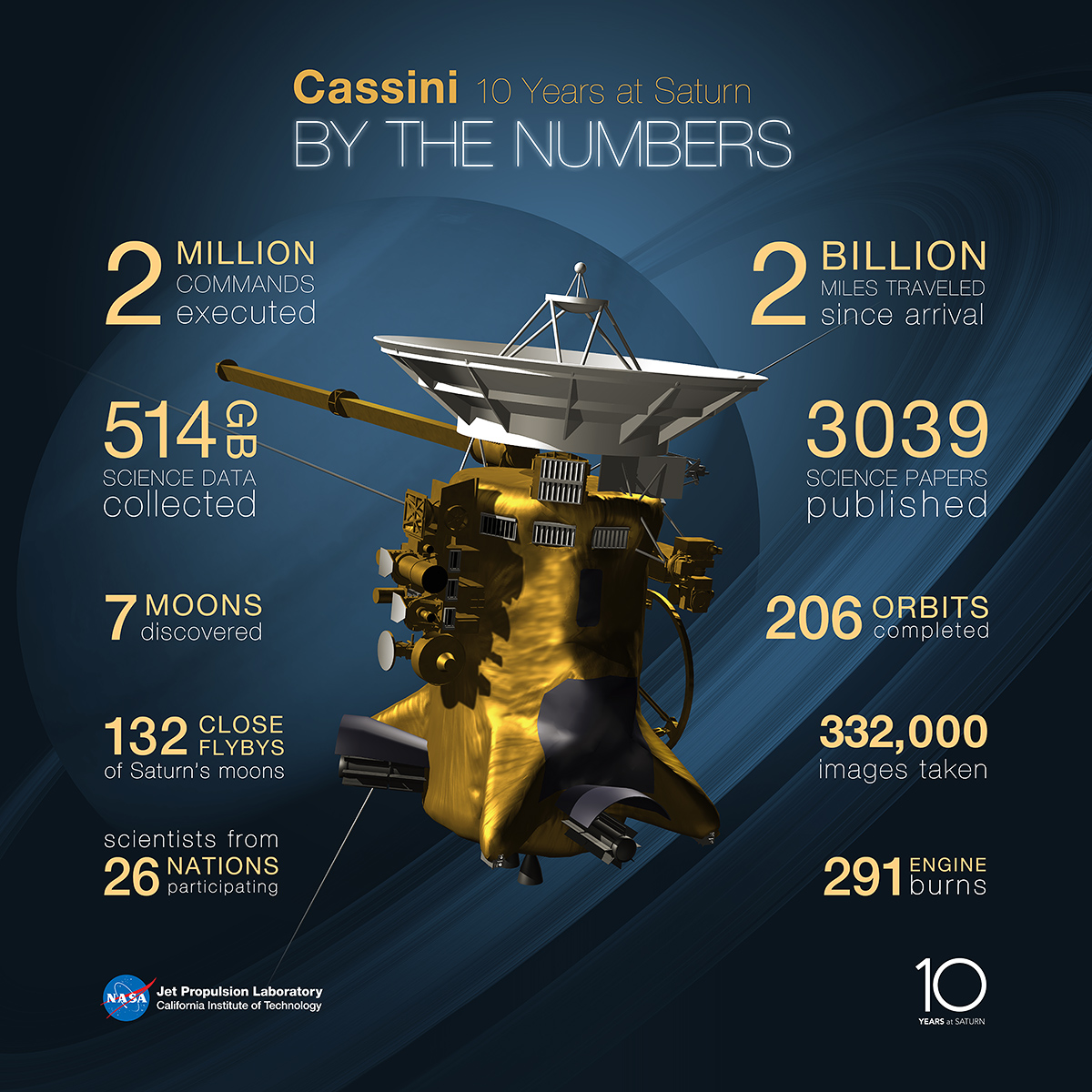
Saturn's hexagon - wikipedia
Now for the pic's!
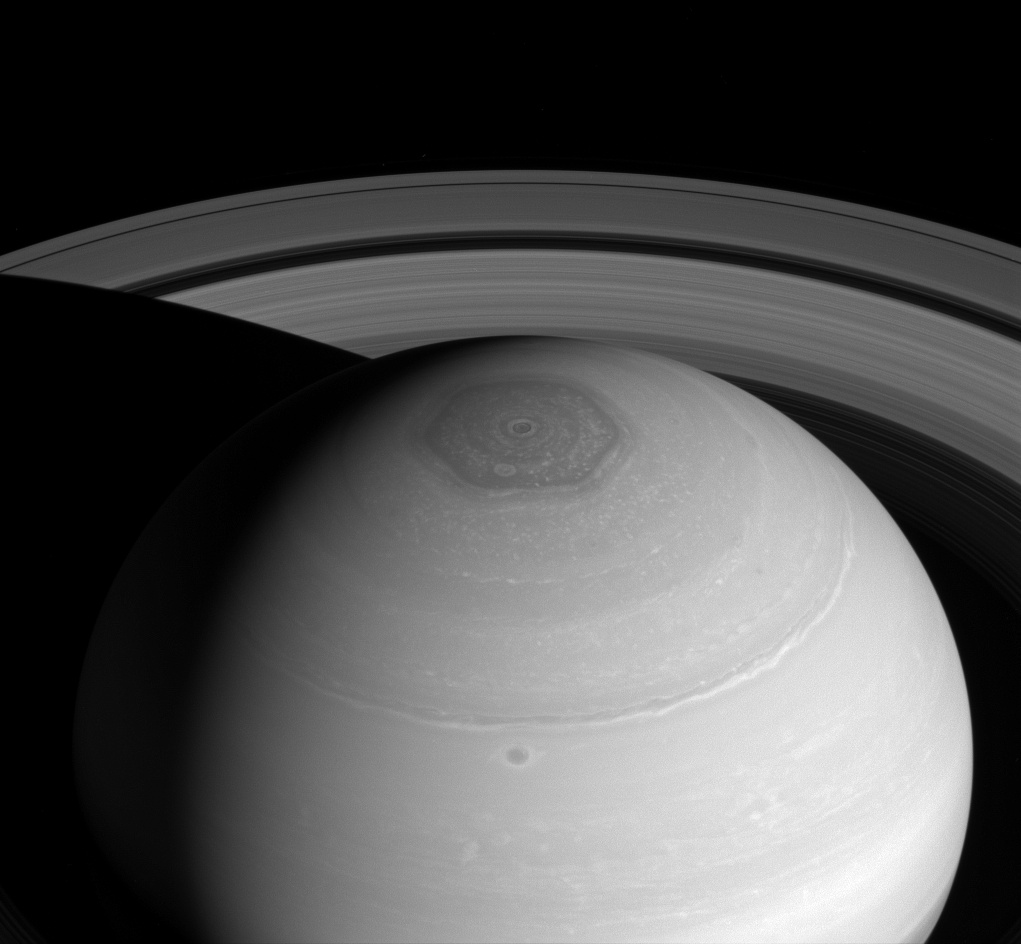
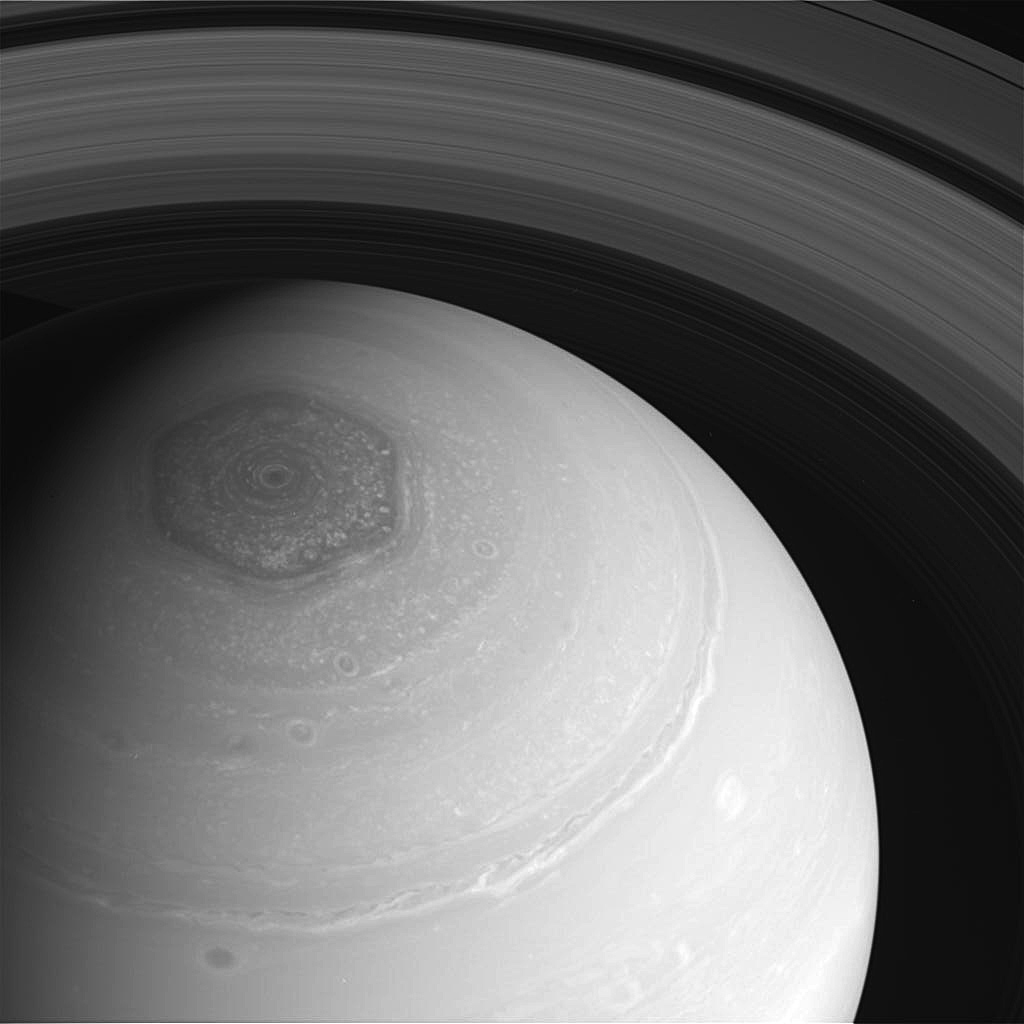

Simply Amazing .
Not Much more i can say really . I am sure these pic's have been around for some time , But hey I haven't seen them around here !
Just thought I would share these with you folks .
Thoughts ?
Kap
##Posting work by others - please read##
But first lets take a moment to honor Cassini !

Saturn's hexagon is a persisting hexagonal cloud pattern around the north pole of Saturn, located at about 78°N.[1][2][3] The sides of the hexagon are about 13,800 km (8,600 mi) long, which is more than the diameter of Earth[4] (about 12,700 km (7,900 mi)). It rotates with a period of 10h 39m 24s, the same period as Saturn's radio emissions from its interior.[5] However, the hexagon does not shift in longitude like other clouds in the visible atmosphere.[6]
Saturn's south pole does not have a hexagon, according to Hubble observations.[7] But it does have a vortex, and there is also a vortex inside the northern hexagon.
Saturn's polar hexagon discovery was made by the Voyager mission in 1981–82,[8] and it was revisited since 2006 by the Cassini mission.[9] Cassini was only able to take thermal infrared images of the hexagon, until it came in the sunlight in January 2009.[10] Cassini was also able to take a video of the hexagonal weather pattern while traveling at the same speed as the planet, therefore recording only the movement of the hexagon.[11] After its discovery, and after it came back into the sunlight, amateur astronomers managed to get images showing the hexagon from Earth
Saturn's hexagon - wikipedia
Now for the pic's!



Simply Amazing .
Not Much more i can say really . I am sure these pic's have been around for some time , But hey I haven't seen them around here !
Just thought I would share these with you folks .
Thoughts ?
Kap
edit on 06/17/2015 by Kapusta because: (no reason given)
edit on 06/17/2015 by Kapusta because: (no reason
given)
##Posting work by others - please read##
edit on 10.5.2015 by Kandinsky because: Added ex-tags and link
[pointless quote of the opening post removed]
nice pix s n f
nice pix s n f
edit on 5-10-2015 by SkepticOverlord because: (no reason given)
Wow. Amazing that cloud formations created that hexagon. I wonder what kind of atmospheric conditions could cause that? I suppose it could be some
vast city complex rather than clouds... but then again, maybe not!
Ahhh... EDIT:
en.wikipedia.org...
Ahhh... EDIT:
en.wikipedia.org...
edit on 5102015 by MrCrow because: Wiki link
Wouldn't it be some # if that polygon was artificial? A global experiment by the indigenous people of Saturn. Let's hope they don't blow themselves
up. In hindsight, they're probably the ones making all those crop circles seeing how they're in to sacred geometry. an artistic bunch, the whole
lot of'em.
very cool pics the hexagonal pattern i presume is the result of weird wind shear/wind current interactions.
or something. interesting stuff.
or something. interesting stuff.
If you were to flatten Saturn into a 2d picture and starting with the pole going out all the way to the tip of the last ring, and if you were to
square the circle would you have a Fibonacci and Pi correlation?
If the storm bands within the hexagon represents each layer of Fi.

If the storm bands within the hexagon represents each layer of Fi.

edit on 5-10-2015 by Rosinitiate because: (no reason given)
originally posted by: MrCrow
Wow. Amazing that cloud formations created that hexagon. I wonder what kind of atmospheric conditions could cause that? I suppose it could be some vast city complex rather than clouds... but then again, maybe not!
Ahhh... EDIT:
en.wikipedia.org...
There's a theory that there vertical gradient (a mountain ridge) underneath all that gas. If the ground were flat, there would just be a circular flow, but the effect of the mountain ridge is to create compression waves. These end up forming the hexagonal shape.
The South Pole is purely circular:
upload.wikimedia.org...
Appreciate the fact these have been brought to light again as yes, they are amazing! However should you do an ATS search on the discovery there is a
wealth of knowledge on the topic.
How the hexagonal shape on Saturns north pole is formed
news.discovery.com...
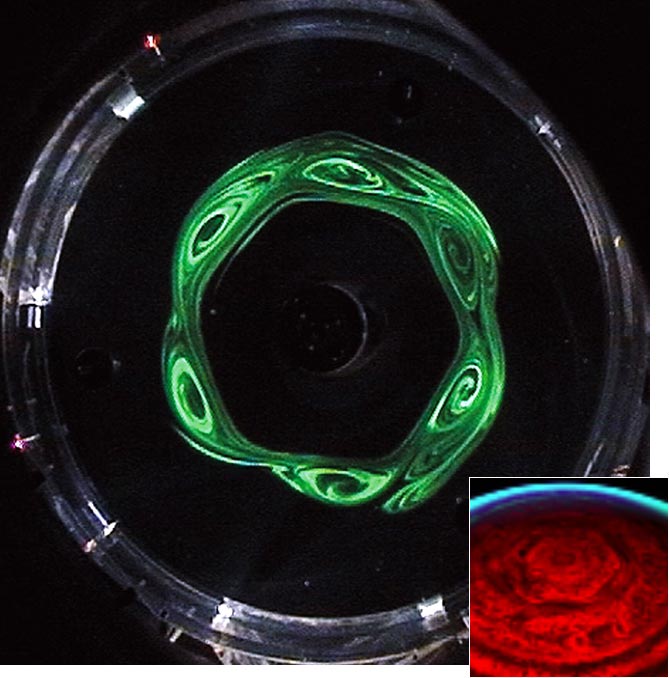
news.discovery.com...

The Oxford researchers made a model of Saturn's North Pole. A slowly-spinning cylinder of water represented Saturn's atmosphere, and a small, rapidly-spinning ring represented a jet stream. They added some fluorescent green dye, and got a pretty well-defined hexagon.
By playing with the speed of the ring, the researchers could make nearly any shape that they wanted. The greater the difference in speed between the water and the ring, the fewer sides the polygon had. The shape seems to be bound by eddies that slowly orbit and confine the inner ring into the polygon.
Here's a gif of the hexagon,
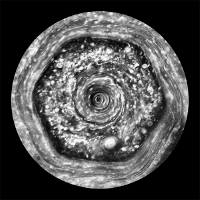

edit on 5-10-2015 by smurfy because: Anime.
Very weird pics, Could this be the result of Saturns Rings, The Rings may carry enough mass to create their own magnetic pulls, just like our Moon and
the Tides of Earths oceans. Still a very weird anomaly, since almost everything is round in space, with rotation
Primer Fields at work here

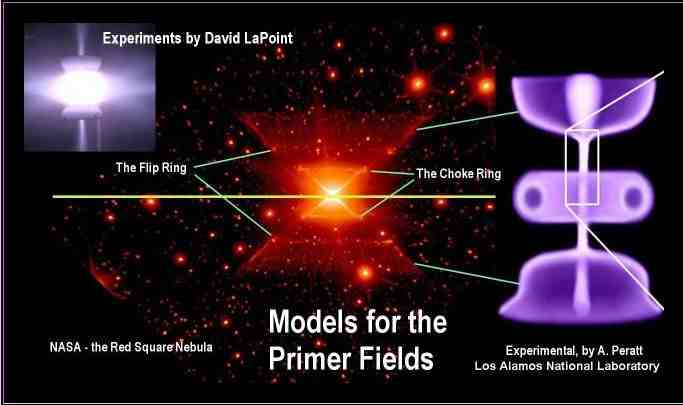



also confirms the taurus theory from Thrive doc





also confirms the taurus theory from Thrive doc
edit on 5-10-2015 by anonymous1legion because: (no reason given)
This (saturn) is the Wormhole the aliens use to traverse this Solar System. Prove me wrong!
Im sure im not the only one who thinks that the Cassini mission has been one of NASA's biggest triumphs.
To have a TEN year mission sending back jaw dropping images round the clock is just mind boggling. That craft has performed her duties and i for one will be very very sad when shes send to her death in a year (or two?)
The next big exploratory mission has some big shoes to fill.
To have a TEN year mission sending back jaw dropping images round the clock is just mind boggling. That craft has performed her duties and i for one will be very very sad when shes send to her death in a year (or two?)
The next big exploratory mission has some big shoes to fill.
I didn't realize people at ATS didn't know about this. This has been known in the esoteric scene for quite some time now.
Saturn, the number 6, and the color black are associated. Along with college graduates, the churches, and the courts.
I don't feel like going into it really, but you ever notice how college graduates and judges wear black gowns? Ever notices how churches and courts are set up so similar?
Go talk to Alan Watts for a little more..
Saturn, the number 6, and the color black are associated. Along with college graduates, the churches, and the courts.
I don't feel like going into it really, but you ever notice how college graduates and judges wear black gowns? Ever notices how churches and courts are set up so similar?
Go talk to Alan Watts for a little more..
new topics
-
Let's talk planes.
General Chit Chat: 1 hours ago -
January 6th report shows disturbing trend (nobody is shocked)
US Political Madness: 3 hours ago -
Inexplicable military simulation - virtual reality showdown in the night..
The Gray Area: 4 hours ago -
The Truth about Migrant Crime in Britain.
Social Issues and Civil Unrest: 5 hours ago -
Trudeau Resigns! Breaking
Other Current Events: 7 hours ago -
Live updates: Congress meets to certify Trump's presidential election victory
US Political Madness: 8 hours ago -
Gravitic Propulsion--What IF the US and China Really Have it?
General Conspiracies: 8 hours ago -
Greatest thing you ever got, or bought?
General Chit Chat: 8 hours ago
top topics
-
Trudeau Resigns! Breaking
Other Current Events: 7 hours ago, 23 flags -
January 6th report shows disturbing trend (nobody is shocked)
US Political Madness: 3 hours ago, 17 flags -
Live updates: Congress meets to certify Trump's presidential election victory
US Political Madness: 8 hours ago, 12 flags -
The Truth about Migrant Crime in Britain.
Social Issues and Civil Unrest: 5 hours ago, 10 flags -
Gravitic Propulsion--What IF the US and China Really Have it?
General Conspiracies: 8 hours ago, 9 flags -
Greatest thing you ever got, or bought?
General Chit Chat: 8 hours ago, 3 flags -
Let's talk planes.
General Chit Chat: 1 hours ago, 3 flags -
Inexplicable military simulation - virtual reality showdown in the night..
The Gray Area: 4 hours ago, 2 flags
active topics
-
Trudeau Resigns! Breaking
Other Current Events • 56 • : YouSir -
Let's talk planes.
General Chit Chat • 4 • : visitedbythem -
January 6th report shows disturbing trend (nobody is shocked)
US Political Madness • 11 • : nugget1 -
Gravitic Propulsion--What IF the US and China Really Have it?
General Conspiracies • 12 • : YouSir -
Meta Llama local AI system is scary good
Science & Technology • 41 • : glend -
Sorry to disappoint you but...
US Political Madness • 29 • : Kaiju666 -
The Truth about Migrant Crime in Britain.
Social Issues and Civil Unrest • 11 • : putnam6 -
Greatest thing you ever got, or bought?
General Chit Chat • 20 • : lilzazz -
-@TH3WH17ERABB17- -Q- ---TIME TO SHOW THE WORLD--- -Part- --44--
Dissecting Disinformation • 3952 • : AianawaQ1320 -
Live updates: Congress meets to certify Trump's presidential election victory
US Political Madness • 17 • : Dalamax
